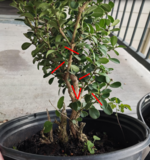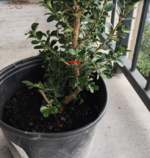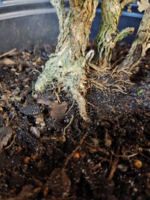gfreak
Mame
Hey y'all!
imgur.com/a/fgUa2wV
I was at the local nursery today and these caught my eye. Were these decent pickups? (for reference they were about $12 each)
Ended up getting this Green mound Juniper and 2 boxwoods, thoughts on them for material?
thoughts on possible style directions on where to go? Or anything I should do the the immediate future? Was planning on letting them grow in those pots until Spring (unless y'all say something different for em would be better lol).
also, Does that 1st boxwood trunk look ok? It looked different then the other but wasn't sure what was going on there lol.
Thanks in advance for any replies!
imgur.com/a/fgUa2wV
I was at the local nursery today and these caught my eye. Were these decent pickups? (for reference they were about $12 each)
Ended up getting this Green mound Juniper and 2 boxwoods, thoughts on them for material?
thoughts on possible style directions on where to go? Or anything I should do the the immediate future? Was planning on letting them grow in those pots until Spring (unless y'all say something different for em would be better lol).
also, Does that 1st boxwood trunk look ok? It looked different then the other but wasn't sure what was going on there lol.
Thanks in advance for any replies!




